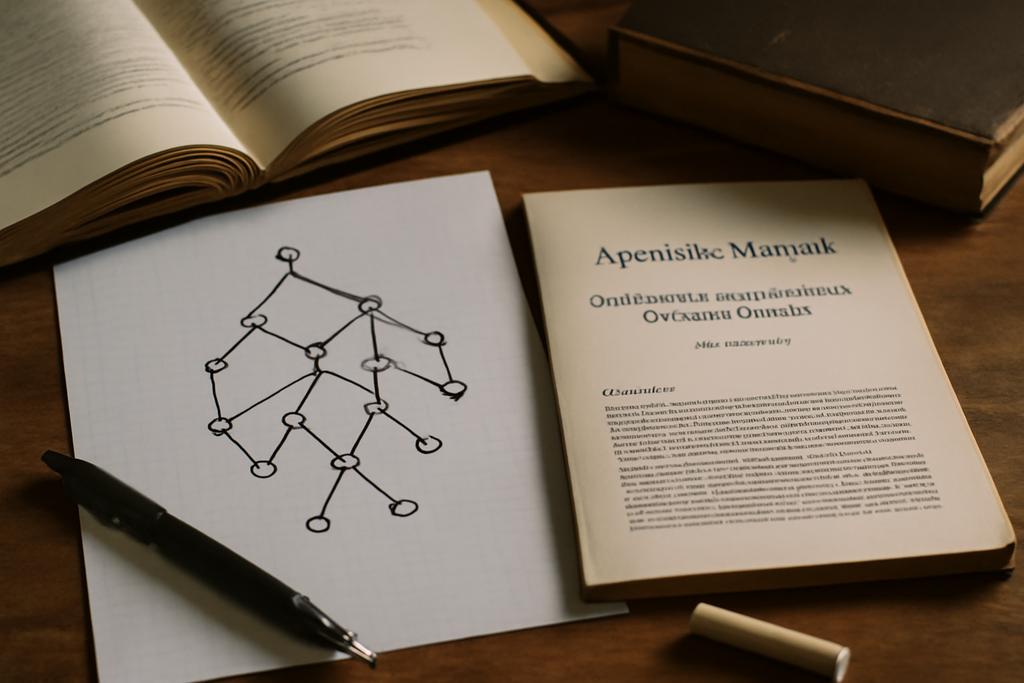Imagine a world built from simple building blocks, where complexity arises not from the intricacy of the parts, but from the sheer number of ways they can be combined. That’s the essence of the mathematical realm explored by Sergey V. Gusev in his recent paper, “Finiteness Conditions for Lattices of Monoid Varieties.” This work delves into the fascinating interplay between simplicity and complexity in the study of algebraic structures known as aperiodic monoids with central idempotents.
What are Monoids, Anyway?
To appreciate Gusev’s findings, let’s get a handle on the basics. A monoid is simply a set equipped with an associative binary operation (like addition or multiplication) and an identity element—a special element that leaves other elements unchanged when operated on. Think of the natural numbers under addition (0 is the identity), or the set of all strings of letters under concatenation (the empty string is the identity). Aperiodic monoids are those without any cyclic subgroups, meaning there are no elements that repeatedly cycle through a finite sequence of values under the operation. Central idempotents are a special type of element within the monoid that simplifies the analysis; they are essentially elements that are their own inverses under the operation.
The Lattice of Subvarieties
The true depth of Gusev’s work lies in his exploration of something called the “lattice of subvarieties.” Imagine a hierarchical structure, where each element is a variety of monoids (a collection of monoids sharing certain algebraic properties), and the relationships between elements show inclusion: one variety is a subvariety of another if all its monoids are also part of the larger variety. This structure—a lattice—is incredibly rich, reflecting the intricate ways monoids can be classified and related.
Gusev focuses on varieties satisfying certain “finiteness conditions.” These conditions relate to the structure of the lattice itself. The ascending chain condition (ACC) means there are no infinitely increasing chains of subvarieties; the descending chain condition (DCC) means there are no infinitely decreasing chains. A small variety is one with only a finite number of subvarieties. These conditions might seem like esoteric details, but they’re crucial for understanding the inherent order and structure within the world of monoid varieties.
A Surprisingly Simple Answer
Gusev’s main contribution is a complete classification of aperiodic monoids with central idempotents satisfying these finiteness conditions. His work reveals a surprising equivalence: for these particular monoids, the properties of being small and satisfying ACC are the same. Furthermore, satisfying ACC automatically means satisfying DCC. This elegant connection simplifies the landscape considerably. This was not at all obvious prior to this research; it’s a significant result!
Gusev achieves this by identifying four countably infinite series of varieties. Each variety in the classification is contained within one of these series, providing a complete, structured overview of how these monoids fit together. The paper offers equational descriptions of these varieties, providing a precise mathematical characterization of their properties.
Why Does This Matter?
This research has important implications for several areas of mathematics. Understanding finiteness conditions is crucial for studying the computational complexity of various algorithms. The classification result provides insights into the structure and properties of monoids and their varieties, a fundamental building block of many areas of computer science and abstract algebra. This work may facilitate the development of new algorithms for solving problems related to monoids, or inspire progress in related fields where similar finiteness conditions play a role. The insights gained here may also aid in the development of more efficient algorithms for various computational problems, particularly in areas dealing with algebraic structures and symbolic computation.
Moreover, the connection between ACC and DCC is quite unexpected and has implications for future research on monoid varieties. This unexpected equivalence could spark new research directions, prompting investigations into other algebraic structures or more general mathematical frameworks.
The Human Element
Gusev’s work isn’t just a collection of abstract theorems; it’s a testament to human ingenuity in unraveling the complexities of the mathematical world. The elegance and unexpected simplicity of his results highlight the power of abstract mathematics to reveal unexpected patterns and connections. By meticulously piecing together seemingly disparate results and techniques, Gusev has made significant contributions to our understanding of algebraic structures.
The research was supported by the Ministry of Science and Higher Education of the Russian Federation (project FEUZ-2023-0022).










